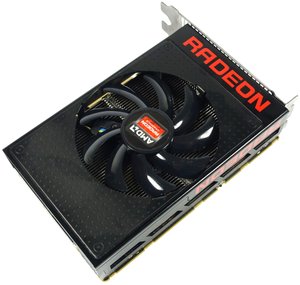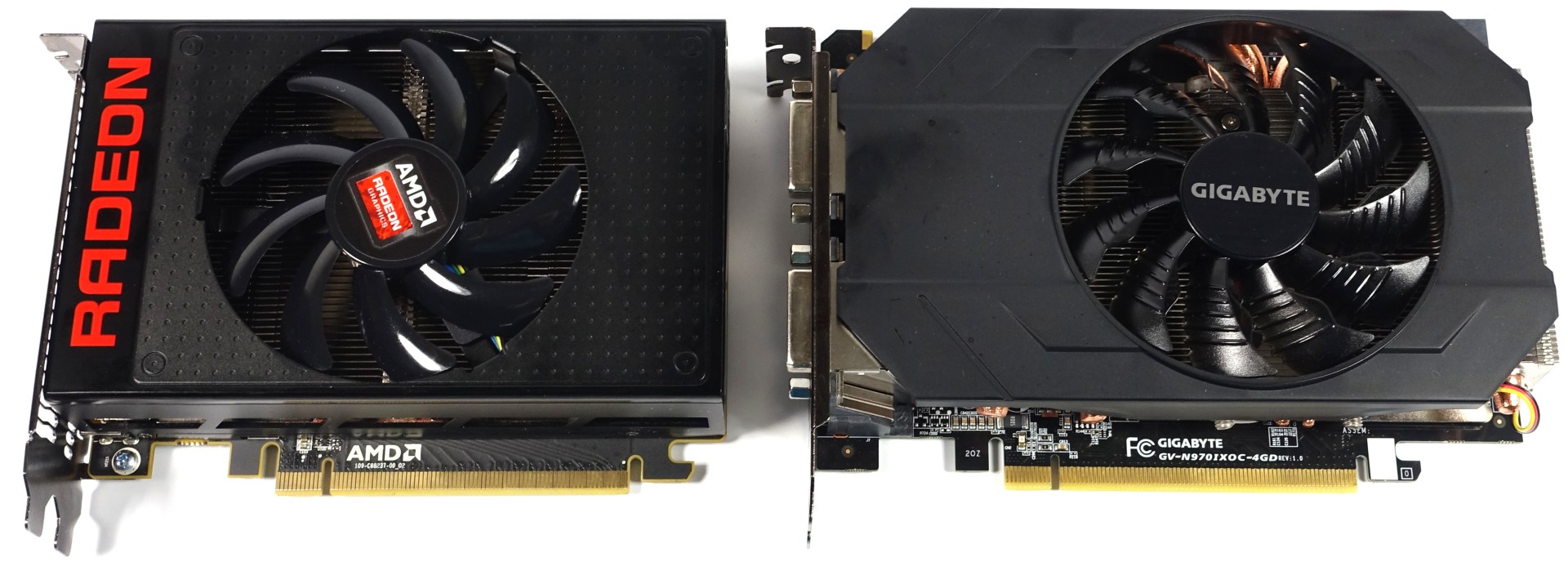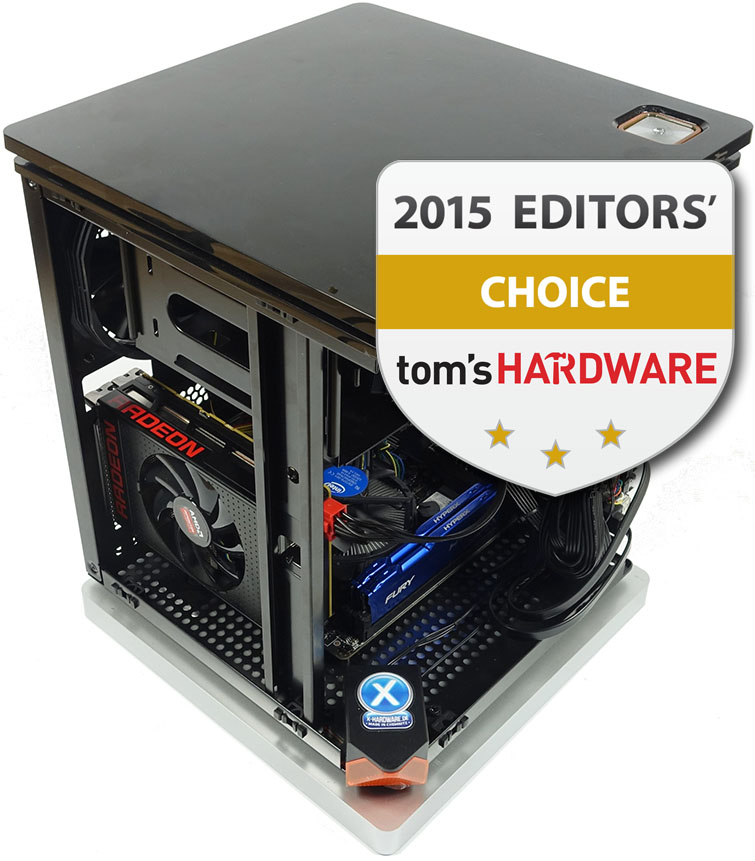AMD Radeon R9 Nano Review
Small, fast and pricey — that’s how AMD wants to establish a whole new product category. But does the Radeon R9 Nano have the performance to back up its price tag?
Conclusion
Enthusiasts fond of space-saving gaming PCs have dreamed of a graphics card that runs as fast as a factory-overclocked Nvidia GeForce GTX 980 at Full HD resolution, and even faster at Ultra HD, while being smaller, lighter and even a bit less power hungry.
We certainly didn't expect that the company to enable such a combination of attributes would be AMD. The Nano's price and availability will make it somewhat of an exclusive product, but it seems that AMD took this into account already. To say the R9 Nano is "In a Class of Its Own" is accurate, since there’s really nothing else out there even remotely like it. Gigabyte's GeForce GTX 970 Mini might go in the same direction, but it doesn’t come close. Consequently, AMD defines a whole new target group for its small form factor flagship.
In the end, we stand in amazement before a great product and wonder why AMD has been unable (or unwilling?) to implement a restrictive power consumption limit in the past. This should have been doable via a firmware update, and would probably have done wonders for graphics cards like the Radeon R9 390X.
It’s been a long time since we’ve seen good sense win over the mad chase after performance. When it comes down to it, I think that most gamers would prefer a cooler, lighter and quieter graphics card over one that averages a few more frames per second on average, but runs hot and loud to get there. This is where the forum threads about undervolting, power limits and planned cooler changes come from. It just can’t be good for a company to ignore the clear signals of its user base for such a long time.
We’d also like to say a few words about Nvidia's GeForce GTX 970 Mini. This is only fair, since AMD put a target on its back. The GeForce is only half as expensive and it's easy to find in stores right now. If a mini-ITX system is supposed to drive a monitor with Full HD or QHD resolution without downsampling, then Nvidia’s offering remains a great fit. Its power consumption of 140W during gaming is a great number, as long as you don’t want to join AMD and play at Ultra HD on a mini-ITX system. The GeForce GTX 970 Mini’s also a bit quieter than AMD’s offering, and has its PCIe power connector on the top.
A word to the wise for those who’re now thinking, “Great, the GeForce GTX 970 Mini’s half as expensive as AMD's Radeon R9 Nano and offers almost the same performance. Let’s buy two in SLI and call it a day!” Unfortunately, we have to burst your bubble. Mini-ITX motherboards are generally limited to one graphics card due to space and motherboard logic considerations. This kind of SLI setup wouldn’t be a problem in a normal-size system, but it’s impossible here. This is what makes AMD’s Radeon R9 Nano so interesting. It offers vastly superior performance for this particular form factor, and it has reasonable heat and noise to boot.
The overall performance of the Radeon R9 Nano really impresses us. We even benchmarked it under extreme circumstances in a closed mini-ITX case under full load. The former king of the hill for mini-ITX systems was the GeForce GTX 970 Mini, followed by AMD’s Radeon R9 380 ITX (too rare to sample, it seems), followed in turn by Nvidia’s GeForce GTX 960 Mini and 950 Mini. The latter have a lot less power and are flat-out unsuitable for higher resolutions.
Get Tom's Hardware's best news and in-depth reviews, straight to your inbox.
So, AMD finally takes a performance crown, even if it’s not as prestigious as the one for the best overall high-end graphics card. The crown is still well-deserved, though, and AMD got there without resorting to intrusive acoustics or fiery temperatures.


One feature of AMD’s new Radeon cards that shows big potential is their DirectX 12 performance. Developers won’t always be able to keep command queues short enough to produce perfect conditions for all manufacturers’ graphics cards, which could turn out to be a very bad thing for Nvidia. AMD, on the other hand, finally has a leg up on its competition.
We’re not going to award the Radeon R9 Nano our purchase recommendation. This would be a bit cynical, since there’ll probably be so few of them that anyone who wants one might have a hard time actually finding it in spite of the high price. The even more prestigious Editor’s Choice award seems apropos, since nobody can deny this card is a special piece of hardware. It doesn’t just represent a rare case study of what’s possible, but also proves what’s achievable when good sense, listening to customers and the search of alternative markets come together.
All of this lets us overlook smaller caveats, such as the R9 Nano’s cheap coils, which make the card sound like cicadas in love. The new graphics card’s fan also isn't our favorite, since it gets obnoxious once a certain temperature is reached.
What’s also annoying is the lack of HDMI 2.0, which makes it impossible for the card to play some 4K content, and effectively limits playback on current Ultra HD TV sets to 30Hz. We’ve weighed all of these caveats in light of the great benchmark results, though, and, in the end, we decided that the award should stand anyway.
Bottom Line
AMD doesn't overstate the Radeon R9 Nano’s status in its marketing materials. This board really is “In a Class of Its Own.” Affluent enthusiasts who either don’t have or don’t want to make the space for a mid-tower PC case, but still want to game at high resolutions, will clearly find the pinnacle of this brand-new segment in AMD’s new graphics card.
Nvidia’s GeForce GTX 970 Mini is a good alternative, especially since it can be had for about half the price. So if money is a consideration, or waste heat needs to be kept at a minimum, then it might be worth a closer look. However, make no mistake, it just can’t compete with the AMD Radeon R9 Nano at high resolutions, even after being solidly overclocked. Then again, if you’re gaming at Full HD, you’ll be just fine.
Hardcore AMD fans, hardcore mini-ITX fans and hardcore collectors will make sure that the AMD Radeon R9 Nano flies off the shelves. This graphics card might cost $649, but it’ll still be semi-permanently sold out everywhere, which is why we’re not lamenting its MSRP too much.
What we’d really like to see are changes to AMD’s other graphics cards’ power limits that take those boards into the same general direction as the new Radeon R9 Nano. In conjunction with the AMD Radeon R9 Fury X, it shows very nicely that it’s not the GPU that’s to blame for those graphics cards’ shortcomings. Without its brakes applied at the right time, the Fury X draws power like there’s no tomorrow.
The AMD Radeon R9 Nano shows that you don’t always have to be the fastest to win the race. Some races are more of a marathon, and it’s more important to pace yourself well.
MORE: Best Graphics Cards For The Money
MORE: All Graphics Content
Igor Wallossek is a Senior Contributing Editor for Tom's Hardware Germany, covering CPUs and Graphics.

Igor Wallossek wrote a wide variety of hardware articles for Tom's Hardware, with a strong focus on technical analysis and in-depth reviews. His contributions have spanned a broad spectrum of PC components, including GPUs, CPUs, workstations, and PC builds. His insightful articles provide readers with detailed knowledge to make informed decisions in the ever-evolving tech landscape
-
Eximo Looks like the table had a hiccup. GTX970 (OC) is showing a lot of the numbers from the R9-390X, and maybe a few numbers from the 980 column.Reply -
-Fran- It is a nice card and I agree, but... It's not USD $650 nice.Reply
This card is a very tough sell for AMD, specially since ITX cases that can house current long cards are not hard to find or weird enough to make short cards a thing.
It's nice to see it's up there with the GTX970 in terms of efficiency, since HTPCs need that to be viable and the card has no apparent shortcomings from what I could read here.
All in all, it needs to drop a bit in price. It's not "650 nice", but making it "~500 nice" sounds way better. Specially when the 970 mini is at 400.
Cheers! -
sna no HDMI2.0 in itx small system near the 4k TV is unforgivable AMD , what were you thinking?Reply -
sna Reply16605176 said:It is a nice card and I agree, but... It's not USD $650 nice.
This card is a very tough sell for AMD, specially since ITX cases that can house current long cards are not hard to find or weird enough to make short cards a thing.
It's nice to see it's up there with the GTX970 in terms of efficiency, since HTPCs need that to be viable and the card has no apparent shortcomings from what I could read here.
All in all, it needs to drop a bit in price. It's not "650 nice", but making it "~500 nice" sounds way better. Specially when the 970 mini is at 400.
Cheers!
well this card is for the smallest case ... not the easy to find huge long itx case.
I personaly find long itx cases useless ... they are very near to Matx case in size .. and people will pick up MATX ovet ITX any time if the size is the same.
BUT for 170mm long card ? this is a winner.
the only thing killing this product is the lack of HDMI2.0 which is very important for itx .. ITX are the console like PC near the tv.
-
heffeque Replyno HDMI2.0 in itx small system near the 4k TV is unforgivable AMD , what were you thinking?
I guess that they were thinking about DisplayPort? -
Nossy I'd go with the 950 GTX for a mini ITX build for a 1080pgaming/4k video HTPC.Reply
For a $650 bucks video card. I'd go with a 980TI and use a Raven RVZ01 if I want an ITX build with performance.

